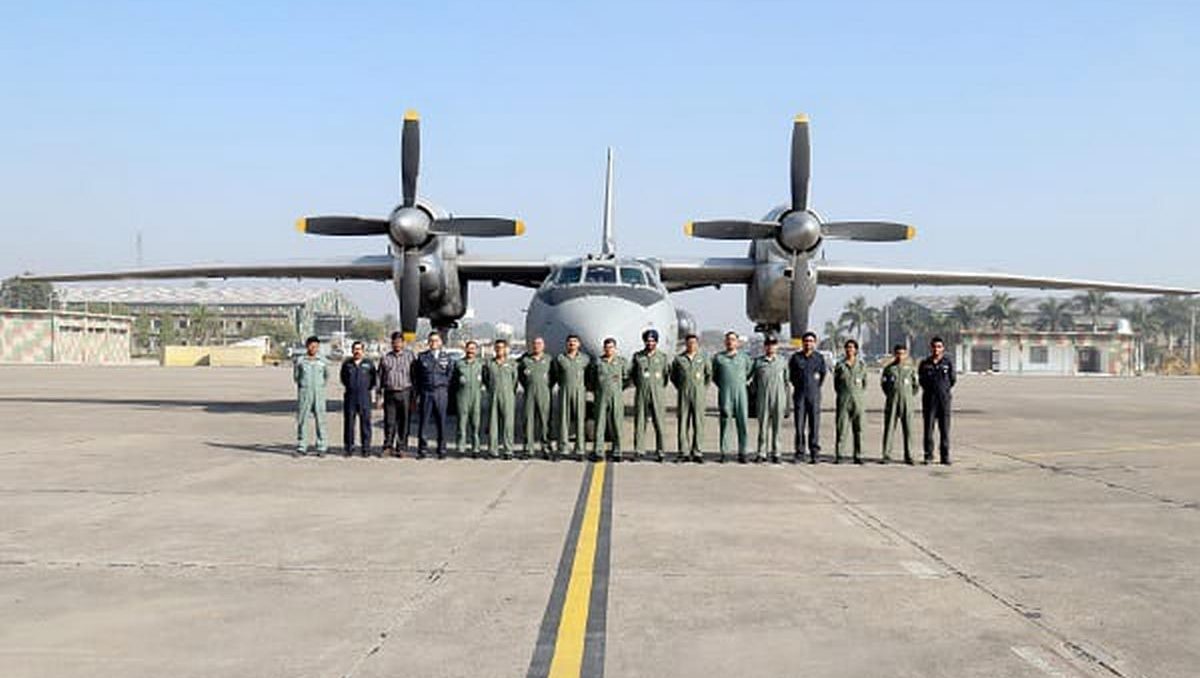ANGAD SINGH
 The total import substitution based on IAF consumption of biofuels alone could reach Rs 25,000 crore by 2024.
The total import substitution based on IAF consumption of biofuels alone could reach Rs 25,000 crore by 2024.
The Indian Air Force (IAF) wants to go the biofuel way and the first flight of Antonov AN-32 aircraft using blended biofuel this week was a significant technical milestone.
This was the first time a Russian aircraft had been flown with a biofuel blend, and the IAF and other project stakeholders had conducted all the work leading up to the test flight with no OEM involvement.
It comes less than five months after Air Chief Marshal B.S. Dhanoa committed to fly a biofuel aircraft over New Delhi on Republic Day 2019.
The breakthrough could eventually be key to a significant reduction in IAF’s operating costs and the establishment of India as a serious player in the global market for biofuels. Sources in Air Headquarters indicated Monday that the total import substitution based on IAF consumption alone could reach Rs 25,000 crore by 2024, creating a strategic advantage for India in terms of fuel dependence and reserves, as well as reduced forex outflows.
A number of factors led here – starting with a Jatropha seed-derived biofuel technology demonstration by the Indian Institute of Petroleum (IIP, a CSIR lab) in 2009. However, the project received its real impetus in 2016, when the International Civil Aviation Organisation (ICAO) announced the Carbon Offsetting and Reduction Scheme for International Aviation (CORSIA), mandating sharp cuts in aviation industry carbon emissions. That same year, Prime Minister Narendra Modi directed all energy-consuming ministries (including the defence ministry) to reduce their crude oil footprint.
An IAF Wing Commander, Asheesh Shrivastava, was assigned to work on biofuels as part of a research project at the Centre for Air Power Studies (CAPS) in 2016. Shrivastava, who has 12 years of experience with Russian transport aircraft, was instrumental in working out a standardisation programme for the biofuel and served as project officer for biofuel at Air HQ, while the IAF funded IIP to produce the fuel itself.
Other important enablers for the project included the IAF’s Aircraft and Systems Testing Establishment (ASTE), Air War Strategy Cell (AWSC) at Air HQ, IAF 12 Wing at Chandigarh, Directorate General of Aeronautical Quality Assurance (DGAQA), Centre for Military Airworthiness and Certification (CEMILAC), and the Chhattisgarh Biofuel Development Authority (CBDA). A source associated with the project said that this “whole of Ministry [MoD] approach and inter-ministerial coordination [was] very unique.”
It certainly bodes well that diverse organisations under different ministries were able to come together for a project with far-reaching environmental and economic impacts.
The choice of aircraft was settled early on, the AN-32 chosen for its twin-engine safety factor and a fuel system that would allow for isolated ground and air testing of the 10 per cent biofuel blend in only one engine.
The Jatropha plant is already used as a source of biofuel around the world, the seeds yielding an oil that is processed into aviation biofuel, biodiesel, naphtha and propane. The ‘seedcake’ waste solids are used for animal feed or composted for fertiliser.
The CBDA is supporting this phase of the biofuel programme, but the scale of the eventual requirement across civil and military aviation would turn Jatropha into a major cash crop in India. CAPS Director General Air Marshal K.K. Nowhar (retd) was quick to point out that the plant is already used in some industrial applications, such as the cosmetics industry, and that there were plans to ensure would be no ‘food versus fuel conflict’ as aviation biofuels take off.
The IIP-developed biofuel itself is what is known as a ‘drop-in’ fuel, as it is functionally interchangeable with existing crude oil derived aviation turbine fuel (ATF). The fuel was exhaustively tested by the IAF, DGAQA, oil companies and DGCA before being certified by CEMILAC.
The IAF now plans to qualify all Russian-origin aircraft and helicopters to use a 10 per cent blend of the fuel in 18 months.
This would lead to economies of scale in refinement and bring the biofuel costs in line with ATF some two years from now (per litre costs are currently around four times the market rate for ATF).
No comments:
Post a Comment